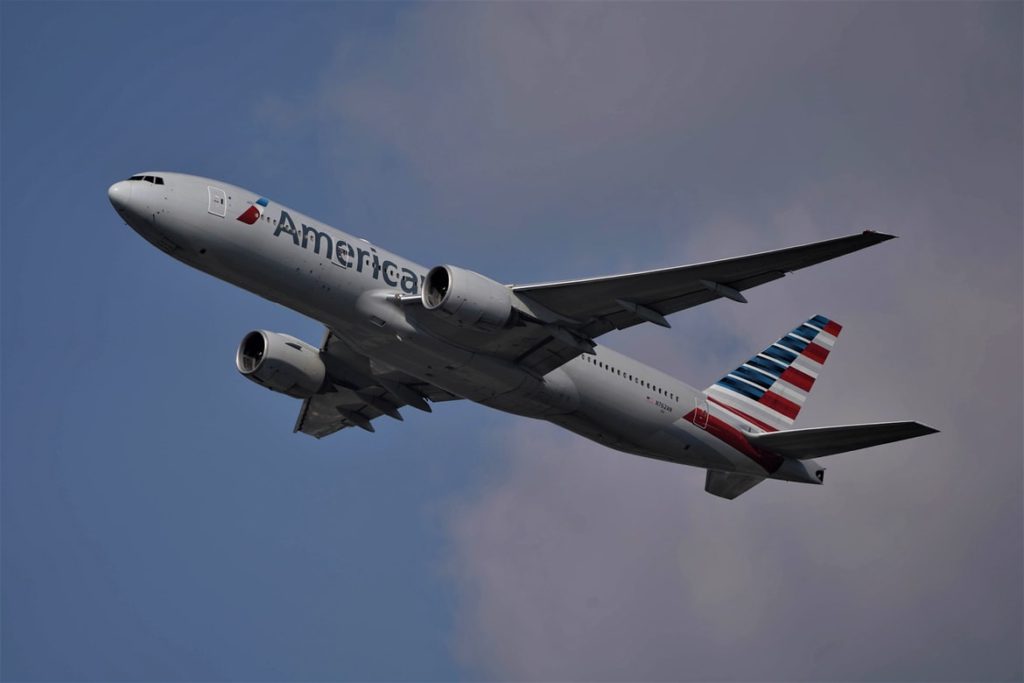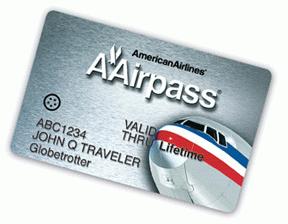
Think of the very worst commercial you’ve ever seen. Did the product seem ridiculous, and did the promotion feel along the lines of a scam? Did you watch and wonder, “why would anyone buy this?” Put this all together and you get the American Airlines AAirpass.
The American Airlines AAirpass was created by American Airlines in 1981. The AAirpass was a membership that offered users unlimited first-class flights, anywhere in the world, for life. This plan to make the company quick money would end up costing them millions.
As far as bad promotions go, there have been some doozies including New Coke, and the A&W Third Pounder. But this one may take the cake. This is a look back on AAirpass and how two individuals made it a nightmare for the company.
Why Did the American Airlines AAirpass Need to Be Created?
I’m not sure how old you are, but if you’re 40 and over, you may have noticed the changes the airline industry has gone through. Flying can really suck, but it’s more affordable than it’s ever been—even with all the ridiculous add-on fees.
But this wasn’t always the case. The “golden age” of flying is considered the 1940s to the 1960s. However, flying was only for the elite. And it was very expensive and complicated.
Low-cost airlines are still a relatively new thing, and today, we can go on the internet and find dirt cheap deals at the last minute. This wasn’t an option just a few decades before. And in the golden age of flying, you had to pay through the nose to fly.
In 1941, a round-trip flight for a family of four to fly from Boston to L.A. would cost $4800 per person, take over 15 hours, and required a mind-boggling 12 stops.
Today, that same trip only takes 6 hours, requires no stops, and only costs around $500 per person.
The airlines set these high costs, but this would all change going into the 1970s. In 1978, The Airline Deregulation Act decided that air travel was a public utility. This meant the government could set the prices to be more accessible for the public and the airlines couldn’t gouge people as they had.
This was a big change, and it made air travel accessible to the average person. But it still wasn’t cheap.
As we go into the 1980s, the average round-trip ticket price was just over $600. That’s when you convert it to today’s dollars. So, not terrible, but not even close to the average round-trip flight of today, which has dropped to around $280.
This deregulation act caused airlines to take a hit. They couldn’t charge what they once had, and this especially hurt American Airlines.
The Creation of the American Airlines AAirpass

The AAirpass would be Americans way to make some quick money. In 1981, they created a membership program that, as mentioned, would allow users to fly anywhere in the world, in first class, for the rest of their lives.
But this thing wasn’t cheap. It cost $250,000. There was also the option of a companion add-on for another $150,000. And here’s one weird thing that would also hurt American Airlines: AAirpass members could still collect frequent flyer miles.
Who was American targeting with the AAirpass promotion? Rich businesspeople. Instead of doing a fare discount that would attract thousands of customers, they targeted the super-wealthy. The idea was they could make more from a premium product that targeted fewer people than a huge fare discount that attracted thousands.
It would also make their membership—and the airline—seem more elite. This program was to target frequent travelers, and American marketed that the pass would pay for itself within a year. When it first launched, only 28 people signed up. But this was the plan. Since many chose the companion add-on, it quickly made American Airlines close to $10 million.
Some famous people signed up, including baseball legend Willie Mays, and Mark Cuban. Cuban would go on to say it was one of the best things he ever bought. American wouldn’t feel the same way…
So far, so good. The launch went pretty well, and customers were excited about this new unlimited pass. This wouldn’t last long…
A Few People Become a Nightmare
Do you remember that Simpsons episode where Homer goes to the all you can eat fish restaurant? He eats so much that he gets kicked before he’s finished. “Does this look like a man that got all he could eat?”
This is the exact situation that happened with the American Airlines AAirpass.
People started using this thing like it was a bus ticket. Many were flying everywhere and anywhere at the drop of a hat. But it was two people who were seen to use the pass to its fullest: Steve Rothstein and Jacques Vroom (which is the greatest name ever).
Vroom and Rothstein became a nightmare for the company. Each of them is said to have flown over 30 million miles using the AAirpass. Vroom would use it to fly to other cities and pick up family members to come help babysit.
Another story is that Vroom needed two new tires for his motorcycle. He finally tracked them down, but they were in London, England. Instead of having them shipped over, he just flew over and picked them up himself.
London was a popular spot for both Vroom and Rothstein. Rothstein says he flew there at least 600 times. Sometimes, he flew over just to pick up a brand of shampoo he liked.
Rothstein loved Europe. He loved it so much that he would fly from Chicago to L.A., pick up a friend, and fly them both to Paris just to visit the Louvre for the afternoon.
Rothstein estimates that he flew from Chicago to New York over 1,000 times. He also flew from Chicago to L.A. 500 times, along with another 500 trips from Chicago to San Francisco. Both of them also estimate that they flew to both Sydney and Paris at least 80 times each.
But who could blame them? You had an unlimited pass anywhere in the world. Why wouldn’t you use it? American Airlines didn’t see it this way.
We should also point out that both Vroom and Rothstein did a lot of good with their AAirpass. Both of them had the companion add-on and would use it to help out others. They would fly sick people across the country so they could be with their families. Rothstein once helped out an American Airlines employee he saw crying in India. She needed to get to Toronto or she might lose her job. Rothstein just took her there.
There were stories that people were selling the companion add-on seats. There was nothing that said they couldn’t do this, but this is where American jumped in. Rothstein and vroom alone were costing the company millions of dollars a year.
American Cancels the AAirpass
We need to point out that it’s not just Rothstein and Vroom using the AAirpass to its fullest; many other people were going buck wild with it. Since there were no restrictions, people would buy multiple flights and just decide at the last minute which they would use.
For a businessperson, they may book a flight the night before, the morning of, and right up to a business trip destination. Then, they would just take the one that works out best.
Others would book multiple first-class trips to various destinations and then decide at the last minute where they wanted to go. You could book a round-trip flight to Paris, London, Rome, and Tokyo, and make a last-minute decision.
You could book 5 different trips and then decide you feel like pasta so you choose Rome. Now, those other first-class seats go unused with American not getting the chance to sell them. Were people taking advantage, or using this program to its fullest? If you had the option, why not book multiple flights in case plans changed?
Again, American didn’t see it this way. They put together a “Revenue Integrity” team to show how customers were not acting in good faith—whatever the hell that means. American said they were taking advantage, and the abuse of the companion pass was the final straw and they canceled their passes.
Again, it has to be pointed out that nothing in the original policy they signed up for said they were doing anything wrong. There also wasn’t even any mention of not being allowed to sell the add-on seat to other people.
Despite all this, American Airlines still canceled their AAirpasses. Unsurprisingly, the lawsuits came out. But both parties were trying to sue one another.
What Happened Next?
This is where it gets messy. The parent company for American Airlines ended up filing for bankruptcy. This has left the lawsuits out in limbo, so nothing has been resolved.
And through all this, you probably imagined the AAirpass went away. It didn’t. It was still a good moneymaker for American as the average person wasn’t overdoing it with the flight booking. But they realized how much of their ass they had to cover. This jacked the price up to $600,000 a few years later and in 1993 it cost $1 million.
By 1994, the AAirpass was discontinued. At the end of the program, only 66 people had signed up. It did make an appearance in the 2004 Neiman Market Christmas Catalog, but it cost $3 million, and no one bought one.
The AAirpass kind of lives on, but today exists simply as “airpass.” It still gives users flexibility and flying options but is a completely different product than the original AAirpass.
Remember how we mentioned the users could still collect Airmiles? This would continue to hurt American Airlines. All the AAirpass members were racking up some serious miles, and just giving them away to friends and family. Rothstein is said to have earned over 40 million Air Miles, all of which he gave away.
Not only had American lost money on all these AAirpasses, but they were also giving away hundreds of free flights because of all the Airmiles they awarded. And to add insult to injury, all the Airmiles they gave away were costing American millions a year in taxes and airport fees the company had to pay.
Final Thoughts on the American Airlines AAirpass
Is this a situation where you could say the company should have seen it coming? I don’t necessarily think so, but it’s still not surprising. If you give anyone the option for unlimited anything, they’ll find a way to take advantage.
The company was floundering and took a Hail Mary shot at something to create quick cash. In theory, this worked. But once people realized what they had on their hands, they went crazy with it.
The American Airlines AAirpass debacle has been a good cautionary tale for businesses to be very clear on the stipulations regarding a membership. It’s also an amazing tale from the 1980s.



